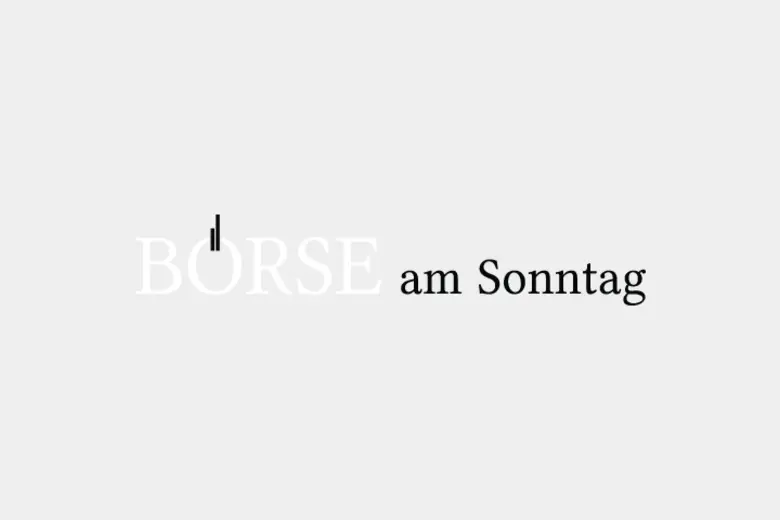Gross über die Aktienmärkte: „Wie eine Ladung Nitroglycerin auf holpriger Straße“
Crash-Gefahr! Star-Investor Bill Gross hält die Trump-Rallye an den Aktienmärkten für höchst gefährlich. Er sieht gewaltiges Rückschlagspotential und setzt die momentane Lage in Relation zur Finanzkrise von 2008. Doch das größte Risiko geht, so Gross, nicht von den Akteuren am Finanzmarkt aus. Von wem dann? Von Donald Trump? Ist die Gefahr überhaupt an eine Person gebunden?

Star-Investor Bill Gross hält die Trump-Rallye an den Aktienmärkten für höchst gefährlich. Er sieht gewaltiges Rückschlagspotential und setzt die momentane Lage in Relation zur Finanzkrise von 2008. Doch die größte Gefahr geht, so Gross, nicht von den Akteuren am Finanzmarkt aus.
Sehr bemerkenswert ist die Haltung, die Gross zum neuen US-Präsidenten Donald Trump einnimmt. Der Star-Investor, der einst im Auftrag der Allianz nach Renditemöglichkeiten suchte, kritisiert eine unreflektierte Begeisterung, die er bei Investoren für den neuen US-Präsidenten sieht. „Lassen Sie sich nicht von der Illusion eines Wirtschaftswachstums von drei bis vier Prozent sowie den magischen Wohltaten von Steuersenkungen und Deregulierung in Versuchung führen“, warnt Gross in seinem jüngsten „Investment Outlook“, die BÖRSE am Sonntag bringt diese Analyse im vollständigen Wortlaut im Anschluss an diesen Text.
Es kann schon stutzig machen: Die Börsenindizes in den USA sind seit dem unerwarteten Wahlsieg der Republikaner kräftig gestiegen und bewegen sich derzeit im Bereich ihrer jeweiligen Allzeithochs. Viele Anleger hoffen offenbar darauf, dass Trumps Politik das Wirtschaftswachstum kräftig ankurbeln und so für weitere Kursgewinne am Aktienmarkt sorgen wird. Eigentlich kann das nicht gut gehen, das fühlen sehr viele Marktteilnehmer – doch kaum jemand scheint danach zu handeln.
Einer spricht es nun aus. Und es ist ausgerechnet Bill Gross, der „Anleihenguru“! Er ist fest davon überzeugt, dass Trump seine ökonomischen Versprechen nicht erfüllen wrid – weil er es nicht kann. Folgerichtig warnt er vor deutlichen Verlusten an den Märkten, zu deutsch: Vor einem handfesten Crash!
Das eigentliche Risiko
Doch ist Trump nun wirklich das große Risiko, das die Börsen zum Beben bringen wird? So sehr der Investment-Leuchtturm Gross den neuen Präsidenten der USA auch kritisiert: Für ihn ist nicht Trump das größte Kursrisiko an den Märkten. Die weltweite Verschuldung sieht er stattdessen als die eigentliche Gefahr an. Völlig zutreffend weist er darauf hin, dass der weltweite Schuldenberg derzeit größer ist als zu Beginn der Finanzkrise im Jahre 2008. In den USA entsprechen dabei die ausstehenden Kredite in Höhe von 65 Billionen Dollar dem dreieinhalbfachen der jährlichen Wirtschaftsleistung. Der Finanz-Tycoon bringt die Lage auf einen griffigen Vergelich: „Unser stark kreditfinanziertes System ist wie eine Ladung Nitroglycerin auf einer holprigen Straße.“
Ein einziger Fehler, so Gross, könne eine Kredit-Implosion auslösen, wenn Gläubiger plötzlich gleichzeitig ihr Geld zurückverlangen würden. Das würde ja geschehen, wenn sie ihre Investitionen in Aktien, Anleihen und Hypotheken loswerden wollten, und nichts anderes sei auch 2008 passiert. Damals hätten die Zentralbanken die Leitzinsen drastisch senken und im Rahmen von ultra-lockerer Geldpolitik Billionen ins Finanzsystem pumpen müssen. Der Bankrott der weltweiten Finanzsysteme sei damals durch diese schnellen und drastischen Maßnahmen abgewendet worden.
Und heute? Bill Gross erhebt warnend die Stimme: Im Jahre 2017 seien die Notenbanken nicht mehr in der Lage, Nothilfe wie 2008 zu leisten. Die Zinsen seien weltweit nahe null, manchmal sogar negativ. Außerdem sei die ultra-lockere Geldpolitik längst an ihre Grenzen gestoßen. „Die US- und die Weltwirtschaft bewegen sich auf einem schmalen Grat“, schreibt der Investor. „Seien Sie mehr darüber besorgt, ob Sie ihr Geld wiederbekommen – und nicht so sehr darüber, wieviel Sie für Ihr Geld bekommen.“
Im Folgenden geben wir den Originaltext von Bill Gross wieder. Dabei wurde die englische Orthographie nicht an deutsche Geflogenheiten angepasst.
Show Me The Money
"School days" inexorably continue at the Gross household, not just because of grandchildren, but because of the necessity to teach my own kids the complexities and pitfalls of investing. As I get older, I fear I may unduly introduce them to a 1930s Will Rogers warning about losing money: "I'm not so much concerned about the return on my money," he wrote, "but the return of my money." "Don't lose it" is my first and most important conceptual lesson for them despite the Trump bull market and the current "animal spirits" that encourage risk, as opposed to the preservation of capital.
Recently I also explored with them the concept of financial leverage – specifically that of fractional reserve banking, which has been the basis of credit and real economic growth since the system was blessed by central banks over a century ago. "It still mystifies me," I told them, "how a banking system can create money out of thin air, but it does." By rough estimates, banks and their shadows have turned $3 trillion of "base" credit into $65 trillion + of "unreserved" credit in the United States alone – Treasuries, munis, bank loans, mortgages and stocks too, although equities are not officially "credit" they are still dependent on the cash flow that supports the system.
But I jump ahead of myself. "Pretend," I told the "fam" huddled around the kitchen table, that there is only one dollar and that you own it and have it on deposit with the Bank of USA – the only bank in the country. The bank owes you a buck any time you want to withdraw it. But the bank says to itself, "she probably won't need this buck for a while, so I'll lend it to Joe who wants to start a pizza store." Joe borrows the buck and pays for flour, pepperoni and a pizza oven from Sally's Pizza Supplies, who then deposits it back in the same bank in their checking account. Your one and only buck has now turned into two. You have a bank account with one buck and Sally's Pizza has a checking account with one buck. Both parties have confidence that their buck is actually theirs, even though there's really only one buck in the bank's vault.
The bank itself has doubled its assets and liabilities. Its assets are the one buck in its vault and the loan to Joe; its liabilities are the buck it owes to you – the original depositor – and the buck it owes to Sally's Pizza. The cycle goes on of course, lending and relending the simple solitary dollar bill (with regulatory reserve requirements) until like a magician with a wand and a black hat, the fractional reserve system pulls five or six rabbits out of a single top hat. There still is only one dollar bill but fractional reserve banking has turned it into five or six dollars of credit and engineered a capitalistic miracle of growth and job creation. And importantly, all lenders of credit believe that they can sell or liquidate their assets and receive the single solitary buck that rests in the bank's vault. Well . . . not really.
"And so," my oldest son, Jeff, said as he stroked his beardless chin like a scientist just discovering the mystery of black holes. "That sounds like a good thing. The problem I'll bet comes when there are too many pizza stores (think subprime mortgages) and the interest on all of the loans couldn't be paid and everyone wants the dollar back that they think is theirs. Sounds like 2008 to me – something like Lehman Brothers." "Yep," I said, as I got up to get a Coke from the refrigerator. "Something like Lehman Brothers."
In the U.S., credit of $65 trillion is roughly 350% of annual GDP and the ratio is rising. In China, the ratio has more than doubled in the past decade to nearly 300%. My lesson continued but the crux of it was that in 2017, the global economy has created more credit relative to GDP than that at the beginning of 2008's disaster. In the U.S., credit of $65 trillion is roughly 350% of annual GDP and the ratio is rising. In China, the ratio has more than doubled in the past decade to nearly 300%. Since 2007, China has added $24 trillion worth of debt to its collective balance sheet. Over the same period, the U.S. and Europe only added $12 trillion each. Capitalism, with its adopted fractional reserve banking system, depends on credit expansion and the printing of additional reserves by central banks, which in turn are re-lent by private banks to create pizza stores, cell phones and a myriad of other products and business enterprises. But the credit creation has limits and the cost of credit (interest rates) must be carefully monitored so that borrowers (think subprime) can pay back the monthly servicing costs. If rates are too high (and credit as a % of GDP too high as well), then potential Lehman black swans can occur. On the other hand, if rates are too low (and credit as a % of GDP declines), then the system breaks down, as savers, pension funds and insurance companies become unable to earn a rate of return high enough to match and service their liabilities.
Central banks attempt to walk this fine line – generating mild credit growth that matches nominal GDP growth – and keeping the cost of the credit at a yield that is not too high, nor too low, but just right. Janet Yellen is a modern day Goldilocks.
How is she doing? So far, so good, I suppose. While the recovery has been weak by historical standards, banks and corporations have recapitalized, job growth has been steady and importantly – at least to the Fed – markets are in record territory, suggesting happier days ahead. But our highly levered financial system is like a truckload of nitro glycerin on a bumpy road. One mistake can set off a credit implosion where holders of stocks, high yield bonds, and yes, subprime mortgages all rush to the bank to claim its one and only dollar in the vault. It happened in 2008, and central banks were in a position to drastically lower yields and buy trillions of dollars via Quantitative Easing (QE) to prevent a run on the system. Today, central bank flexibility is not what it was back then. Yields globally are near zero and in many cases, negative. Continuing QE programs by central banks are approaching limits as they buy up more and more existing debt, threatening repo markets and the day to day functioning of financial commerce.
I'm with Will Rogers. Don't be allured by the Trump mirage of 3-4% growth and the magical benefits of tax cuts and deregulation. The U.S. and indeed the global economy is walking a fine line due to increasing leverage and the potential for too high (or too low) interest rates to wreak havoc on an increasingly stressed financial system. Be more concerned about the return of your money than the return on your money in 2017 and beyond.
Die Originalquelle: https://www.janus.com/insights/bill-gross-investment-outlook/


